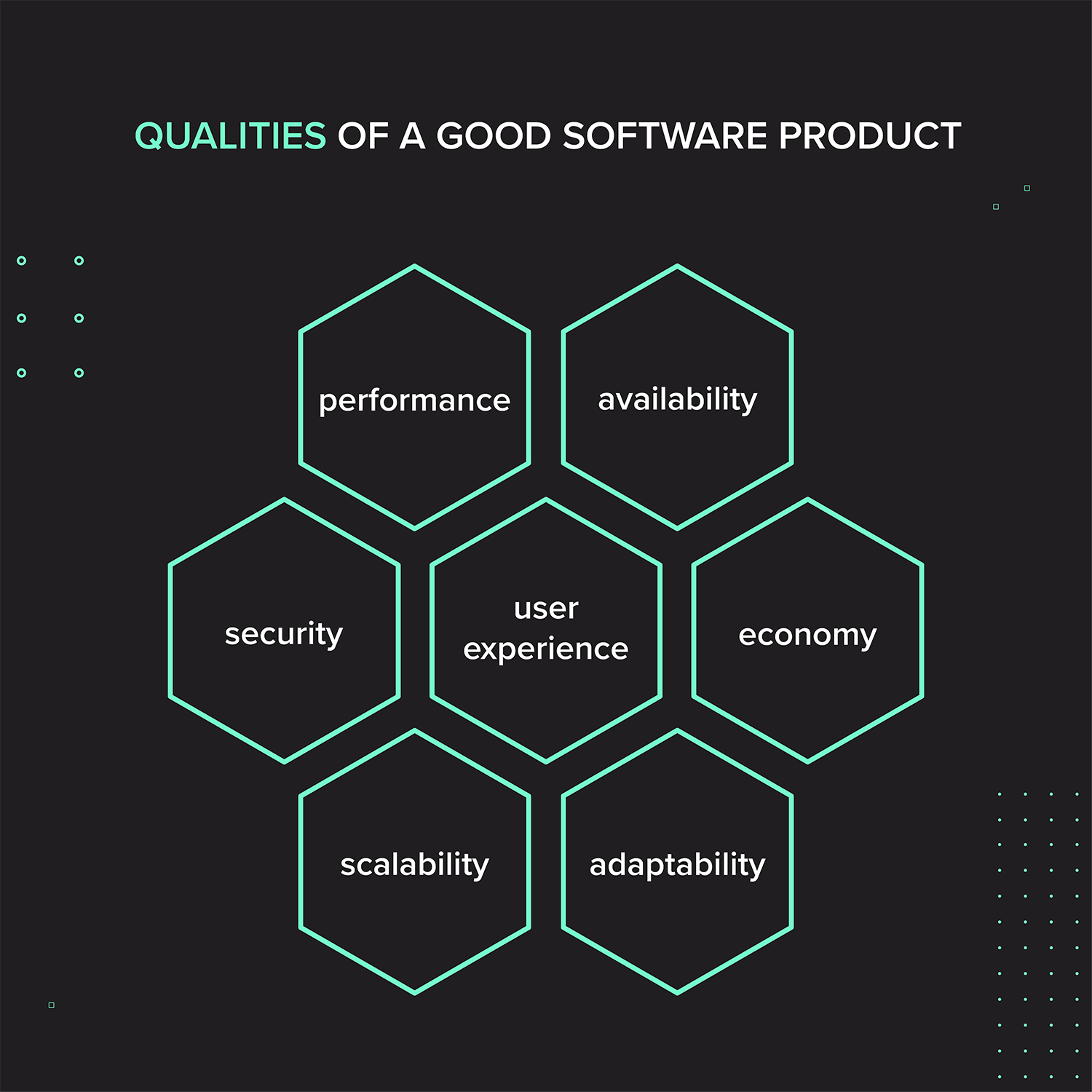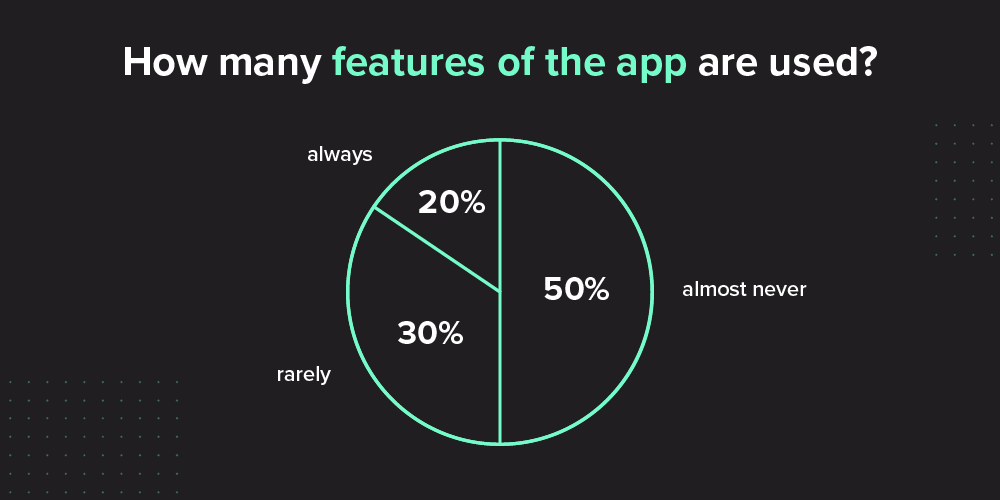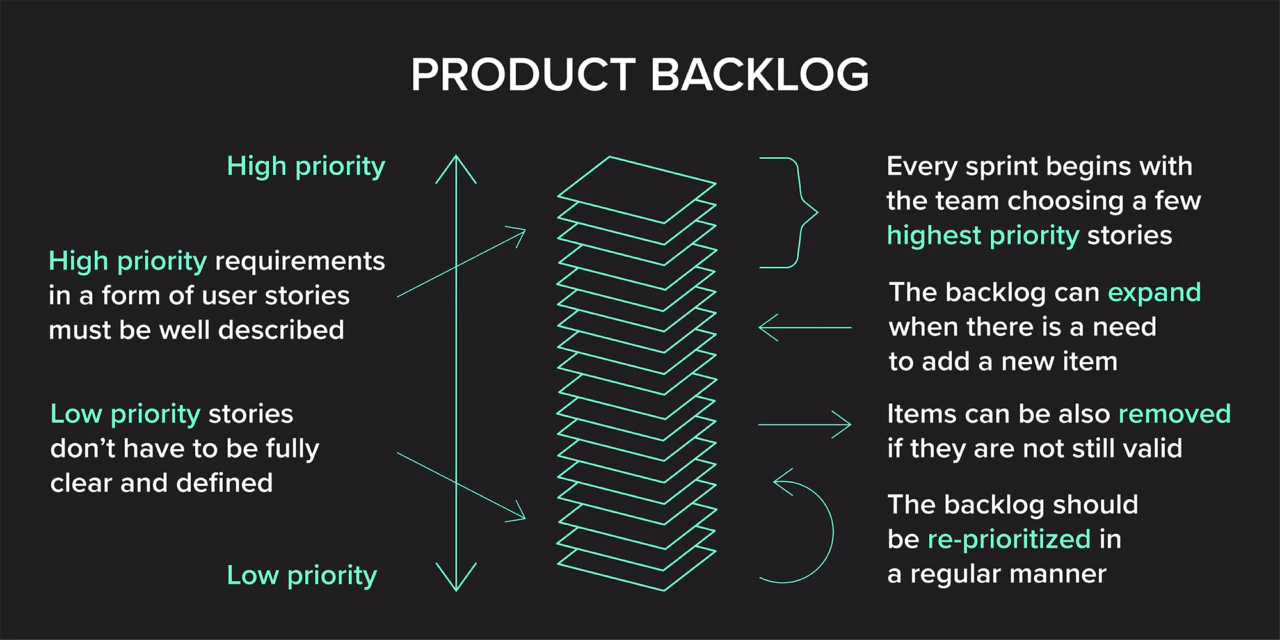How to prioritize product backlog based on business value in agile
This article will be another story about the importance of business value in software development. Returning to the topic and observing it from a different angle is reasonable as the matter is wide and still very underrated. From our perspective, the business value subject is worth working through and sharing knowledge about its potential. It can actually be used as the best support in bringing products to the market that have a real chance of success. How does that happen? Business value helps to prioritize what is the most crucial part of a software product and without which the product will not be successful.
Let’s begin with what is considered business value in software development.
Business value understanding
First of all, the business value is originally linked with agile methodology. Agile practices set paths for the development team and the client to take care of the business value of built software.

The conclusion, then, is that the agile methodology supports building products useful to users by solving their problems or obliterating other important needs. Agile is, therefore, a guardian of business value.
Let’s dive into the methods that agile uses to make products successful.
Why the features’ prioritization is needed?
The useful product is not the one packed with features, it’s the one that solves the user problem in an efficient way. As consumers but also as human beings we are very overstimulated. This is due to the fact the world is packed with great propositions and chances and products that we are told to use. No wonder we are a bit fed up with multiplicity and long for simplicity. The statistics proves it and therefore should be a guide for the business. People use only the most valuable features of the downloaded apps.

Creating only the needed and essential features is then a great way for businesses to save money and time. However, the question is how to distinguish an essential feature from an unnecessary one? Here the agile and the prioritization techniques come to play.
Value discovery happens iteratively
The feature value for the user should be discovered and discussed from the beginning, but in the natural rhythm of the project, as it appears at different times. That’s why agile is cool – it allows development teams to discover these values in the process, iterate and, as a result, make the values behind the feature better adapted to the users.
First, however, in order to explore the values that arise from the feature, the team has to know the requirements targeting a given feature. Agile allows the team to gather needs during the whole process of software development right from its start.

Power of interaction
The first chance to get to know the most about the project is to talk with people. The agile team has many opportunities to do so. The most important one concerns defining what the project is about – its core, main ideas, and user needs. The more valuable information gathered from different parties involved with the project, the better. The agile team (development team with the product owner and scrum master), the client (stakeholders), and if beneficiary the marketing teams and copywriters – all points of view can be constructive. Brainstorming is a great way to work out the core of the project which helps to determine project requirements.
How to get the user perspective
Brainstorming will be a truly beneficial if the user perspective will be its core. At last, for the team, not only customer satisfaction is required, the most critical is to create a product that users perceive as valuable.
The input of what the user wants from the product can be obtained variously. The client may use the skills of UX researchers and request to examine the needs of the target audience. The other method is to create a survey with a few questions and distribute it via social media groups or forums. There are also specialized user testing platforms that help businesses to evaluate their ideas through interviews and usability testing with real users.

User stories as a way to discover requirements
All that was gathered during brainstorming provides a base for defining the project’s requirements. The clue is to look at the ideas from the user’s point of view. Therefore, the analyzed ideas are presented in the form of user stories. A typical user story defines the object – who, what the object aimed, and why it is needed. Such a structure allows the team to understand the user’s need fully – not only what but also why something is needed.
Creating user stories is very useful in the process, as sometimes the team may switch from one requirement to another if the user’s goal is still met. Defined requirements in a form of user stories are included in the product backlog. It is a list of requirements that become a source for tasks to deliver.
Product backlog prioritization
A crucial moment is to refine the entire backlog and organize it. It’s a must-have task to perform, so the team will know which user stories will be implemented and which ones not necessarily. This is called product backlog prioritization, and like many agile practices, it’s done iteratively. The project knowledge level is various at its different stages, so the prioritization can not be done only at the beginning when the team knows the least.
As we already mentioned prioritization is required to develop the essential features and to avoid overloading (and spending too much money). To prioritize which requirement has high or low importance the team has to understand it so the requirements have to be well described. As the agile projects are about discovering, the team doesn’t have to know at the beginning all details needed to define a user story. And that is ok, although, not a detailed user story can not become the high important feature. It would have to wait to be described to get to the top of the product backlog.

Prioritization techniques allow the team to organize the backlog, so with the start of each new sprint (a time period within the team delivers selected requirements), the team can grab a few user stories from the top of the backlog and start working on them.
Prioritization is the key tool to creating business value
Why the prioritization techniques like describing user stories are so influential on the overall process quality?
A well-described requirement allows the team to understand the value of functionality and deliver truly useful features in line with the clients’ or users’ expectations.
Therefore, the contribution of the client who is aware of the end-user perspective is essential. Well-written user story allows the team to understand a full context and deliver what the customer, and user want. What is also vital in user story descriptions, is the acceptance criteria. It explains what must be exactly provided to consider the requirements as delivered and thus accepted.
A quality product backlog with well-described user stories is critical because their delivery affects the overall business value of the product. Logically speaking, if the team (together with the client) cares that the value (customer value or user value) is in every functionality, then the whole product will be valuable.
Agile – Scrum and Kanban as methodology frameworks, have many tools at their disposal that assist in increasing the product’s value. In our previous article on business value in agile methodology, we described other practices that support bringing value to software products. If you are interested in a business value topic, that one is a must-read.

Software Things way to a maximum value
Delivering technology products with maximum user and customer value is based on several factors, and agile methodology includes all of them. This is one of the reasons why, in our opinion, agile is the best project management method.
For us, working in agile is a great chance to derive from its practices as many benefits for the product as possible. Our strategy is to start well, as the beginning of the development process is a far-reaching factor that affects the priorities and thus the smooth progress of the whole process.

We are aware of how critical is to create a good backlog based on real value, so we worked out a way to start the project effectively and build the foundations for creating a quality product. At Software Things we have our method for a great kick-off and ideas gathering – the preparatory workshops with clients. How does it work
– We discuss the main objective of the project, reducing it to specific business values for all product personas.
– Then, we prepare an initial product backlog in the form of user stories, which is a central source of all work to be done. The entire backlog is saved in a project management tool called „Jira”, to which our partner has access throughout the entire development process. All stories are estimated using the so-called „Story points”.
– Next step of the workshops is to draw a mind map showing the initial sketch of the application architecture at a high level of abstraction. All of this is to present the client with the overall plan for the product.
– The very beneficial element we provide is the discussion of the risks that may occur in the project and our way to prevent them.
– All priorities and arrangements worked out during the workshops are presented in a form of a project card. It’s the „document” aimed to demonstrate the most important information about the project: information on the dates and form of meetings, project risk, budget, competition, and important arrangements.
Agile rocks when it comes to business value
Creating software products that bring value is an ideal goal that every software company wants to achieve in its projects. Agile supports delivering useful and profitable products in many ways.
- Prioritization of requirements and features is conducive to the development of what is truly important in the product.
- Delivered values can be refined successively, thanks to an iterative way of working.
- The client participates in the process and observes the work and features development on an ongoing basis. Feedback is easy to obtain which makes progress easier.
- Agile shapes the way of working and, through ceremonies, makes the process effective as it can be observed, discussed, and improved. As a result, the product is always in line with business value.
As you can see, working in agile leads to determining business value which is a must-have for every successful product. Therefore, in our opinion, the topic matters, as it can be very beneficial for software development.
If you are interested in our approach to building products that bring value, you can contact us here.
Read more about

Contact
Benefit from a free consultation
Ready to turn your software idea into reality? Collaborating with us means benefiting from our experience, expertise, and cutting-edge technology to bring your vision to life. Simply share a few words with us about your idea, and our expert will reach out to ask the ring questions.


